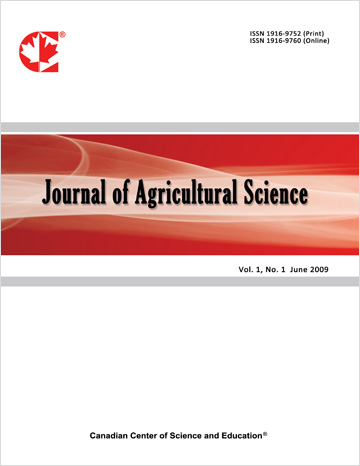Optimizing Black Soldier Fly Production: The Impact of Substrate on Growth, Survival Rate, and Nutritional Profile
- Shadrack Kwadwo Amponsah
- Joel Adu
- Theophilus Frimpong
- Felix Frimpong
- Eric Owusu Danquah
- Natson Eyram Amengor
- Patricia Amankwaa-Yeboah
Abstract
Black soldier fly larvae (BSFL) have emerged as a sustainable and efficient tool for bioconverting organic waste into valuable insect biomass, particularly for use in animal feed. We investigated the effects of three substrate types—fruit and vegetable waste (FVW), animal protein waste (APW), and a combination of both (FVW + APW)—on the growth performance and nutritional profile of BSFL under Ghanaian conditions. Five-day-old larvae were reared in 2-litre containers with 2 kg of each substrate, replicated three times, and monitored over 8 days. Larval development parameters were evaluated, including weight, size, feed conversion ratio (FCR), survival rate, and nutritional content. Substrate temperatures remained within the mesophilic range (30.46 °C to 37.83 °C), with the highest temperatures observed in the mixed-substrate treatment. BSFL fed the combined substrate exhibited significantly superior growth, achieving the highest weight (7.83 g), length (13.84 mm), and width (3.07 mm) compared to larvae reared on single substrates. Nutrient analysis revealed that larvae raised on APW had the highest crude protein content (27.78±2.12%), while those on FVW and FVW + APW had higher fat (5.09-5.89%) and carbohydrate contents (13.33% in FVW). Moisture content ranged from 72.24% in FVW to 76.21% in APW, with ash content peaking in APW (1.14±0.19%). Notably, although growth and nutritional parameters varied significantly among treatments (P < 0.05), survival rates were not significantly affected, suggesting all substrates supported larval viability. These findings highlight the crucial role of substrate composition in maximizing BSFL production. The mixture of fruit, vegetable, and animal protein waste offered the most favourable balance of temperature, nutrient availability, and larval development outcomes, making it the most suitable for large-scale rearing of black soldier flies (BSFLs). This study provides a practical foundation for sustainable organic waste valorization and insect-based feed production in tropical contexts.
- Full Text:
 PDF
PDF
- DOI:10.5539/jas.v17n10p65
Journal Metrics
- h-index: 67
- i10-index: 839
- WJCI (2023): 0.884
- WJCI Impact Factor (2023): 0.196
Index
- AGRICOLA
- AGRIS
- BASE (Bielefeld Academic Search Engine)
- Berkeley Library
- CAB Abstracts
- ChronosHub
- CiteSeerx
- CNKI Scholar
- Copyright Clearance Center
- CrossRef
- DESY Publication Database
- DTU Library
- e-Library
- EBSCOhost
- EconPapers
- Elektronische Zeitschriftenbibliothek (EZB)
- EuroPub Database
- Excellence in Research for Australia (ERA)
- Google Scholar
- Harvard Library
- IDEAS
- iDiscover
- Jisc Library Hub Discover
- JournalTOCs
- KindCongress
- LIVIVO (ZB MED)
- LOCKSS
- Max Planck Institutes
- Mendeley
- MIAR
- Mir@bel
- NLM Catalog PubMed
- Norwegian Centre for Research Data (NSD)
- Open J-Gate
- OUCI
- PKP Open Archives Harvester
- Polska Bibliografia Naukowa
- Qualis/CAPES
- RefSeek
- RePEc
- ROAD
- ScienceOpen
- Scilit
- SCiNiTO
- Semantic Scholar
- SHERPA/RoMEO
- Southwest-German Union Catalogue
- Standard Periodical Directory
- Stanford Libraries
- SUDOC
- Swisscovery
- Technische Informationsbibliothek (TIB)
- Trove
- UCR Library
- Ulrich's
- UniCat
- Universe Digital Library
- WorldCat
- WRLC Catalog
- Zeitschriften Daten Bank (ZDB)
Contact
- Anne BrownEditorial Assistant
- jas@ccsenet.org
